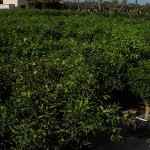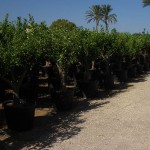CITRUS RETICULATA
MANDARINS
Synonyms: Citrus nobilis, Citrus deliciosa Ten., Mandarin, Mandarine, Tangerine, Orange Manderin, Clementine Manderin, Tangor
Common name: Mandarin, Citrus deliciosa, Citrus unshiu
Origin: Species native in the Philippines and Southeast Asia exported and sold in Europe due to its fruit.
Etymology: The word Citrus Reticulata is a combination of the words Citrus (from the Greek) meaning lemon, and Reticulata (from the Latin reticulatus-a-um) meaning provided with a grid, perhaps referring to the fruit bark.
Minimum Temperature: -3º C
The Citrus reticulata, mandarin, is very similar to the orange tree, but its care is more delicate. Due to it is a very productive tree, the mandarin needs to be constantly pruned to sprout in a perfect and correct way and to avoid its branches to get broken. Therefore, it is recommended to ask how and when is the best time and way to prune a citrus reticulata at the plant nursery that you are purchasing it.
One of the great advantages of citrus reticulata is that it perfectly resists to water shortage compared to other citrus, so irrigation is not necessary. For this reason, mandarin is purchased for areas where rainfall is not abundant.
Citrus reticulata trees are remarkable ornamental plants, both isolated in gardens and patios, and as part of small woods or hedges. Those trees are bought to decorate any place, but with the defect that they must be constantly pruned. Moreover, mandarin can be purchased in pots for interior decoration, although it is not that common..






